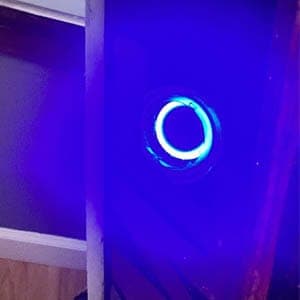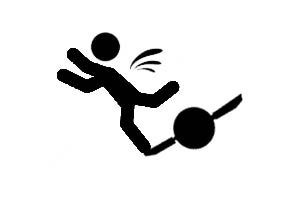In November of 2022, the CPSC posted a warning regarding the use of Onewheels and their danger. The letter claims that “due to ejection hazard; at least four deaths and multiple injuries” are reported. Onewheels along with other board sports have an element of danger to them. By lowering the risk is how we can enjoy sports and hobbies safely when with some element of danger to them.
Lets put things into perspective. This letter references an ejection hazard and yet does not specify any model. The article is insinuating that no model is safe and essentially comparing the Onewheel to a wildcard. They state “there have been at least four reported deaths between 2019 and 2021 and multiple reports of serious injuries after the product failed to balance the rider or suddenly stopped while in motion. The reported deaths resulted from head trauma. Reported injuries include traumatic brain injury, concussion, paralysis, upper-body fractures, lower-body fractures, and ligament damage.”
As of October 2023, there is a one wheel recall however it is for firmware and does not resolve this claim.
How Does a Onewheel Fail to Balance a Rider?
If a board fails, then usually the board just will not turn on and will produce an error code. Onewheels (unless they have been modified) do not fail to balance the rider in mid-ride unless one of three scenarios happen. Failing to balance the rider happens when either the following happens: the battery dies, when pushback is exceeded or there’s a mechanical defect. All will result typically in nosediving on the onewheel.
Dead Battery or Low Battery
Onewheels do not have unlimited power. Since their inception, Onewheel fanatics constantly are seeking more range. The main way to increase range is to increase the battery size which Future Motion and the community have worked diligently towards. Still however, there is a range limitation. When the battery dies, it dies.
It is very important to know that the power served to the rider with 100% battery life is more torque than with a Onewheel with only 10% battery life. Obviously a 0% battery will fail to balance a rider. Could Future Motion make a loud audible speaker when the rider is approaching a dead battery? They do have a pushback ‘beep’ on the GT we will discuss later however riders need to look at the status bar often. If you are on an XR you have to check your app or look at the power button.
GT, Pint and Pint X Battery Health

The GT and Pint line has a very visible battery display which should not be ignored. When the status bar turns yellow, you will need to take extreme caution as there will be limited torque and power to help you maneuver. Its best to get off the board if you are on any sort of rough terrain. If the status bar turns red, its highly recommended you get off the board asap.
XR Battery Health
The XR does not have a status bar however the power button has an LED ring around it which actually is supposed to give you battery health information. This is known as the LED status ring indicator. It will pulse which is to notify you of battery health. If the status ring is:
- Fully lit: 100% battery health.
- Lit more than not: battery is somewhere between 50%-100% depending on how long its lit.
- Half lit / half off: Battery is at 50%.
- Lit less than off: Battery is 10% – 50%


When the Pints, GT or XR dies, you will start to get a prolonged pushback. It will be so pronounced towards the 0% battery life that the tail of the onewheel will drag (taildrag). Many riders call this Captain Morganing stance (Captain Morgan). This is from the Captain Morgan logo. The feeling of riding a dead battery is similar to the way the captain has his foot over the barrel. This pushback cannot be ignored. If you attempt to push through this by adding weight to the front footpad, likely it will result in a nosedive due to the lack of power.
Exceeding Pushback
Exceeding pushback is the most common reason why riders nosedive and get “ejected” from their Onewheel. Riders need to respect pushback. Can the Onewheel exceed the speeds that are advertised? Yes however Future Motion has set Pushback to occur right before max speed to notify you that you are in a danger zone. Why is this a danger zone is because the Onewheel cannot maintain the speed you are requesting.
Riders that exceed pushback are requesting more power than the Onewheel can offer. Pushback is a recalibration of the level in the Onewheel so that the nose of the Onewheel is slightly pitched upwards. Continuing to push on the front end of the Onewheel will result in a nosedive. The Onewheel cannot slow you down. If it slowed down as you leaned forward, you would end up in a nosedive. If the pushback was set all the way where the tail dragged and you still had weight on the nose, it would result in a nosedive.

Riders need to be very aware of the pushback they feel. If you feel the nose push upward – this is pushback. Lean back and let some of the weight off the nose of the Onewheel.
Mechanical Failure on a Onewheel
I do not want to claim that there hasn’t been any mechanical failures however much of the riders who do claim their board failed to balance them was due to overpowering the motor on the terrain they were on. Watching several videos and reviewing comments online, the mechanical failures that are happening appear to be from boards with battery modifications, high mileage Onewheels that look like their are not well maintained, or boards have some sort of footpad modification done to them. It is extremely rare to see a new board just unload a rider mid-ride. I personally have not seen that unless any of the above are true.
The only defect currently known is that Future Motion made the GT footpad too sensitive. This is the ghosting debacle that had occurred on the Onewheel GT. This defect isn’t a case where riders are ejected from their Onewheel. This is a case where the board will continue to go even when you get off of it.
Mechanical failure is a concern however on modified boards. Some of the later XR onewheels that have battery modifications required soldering of an FFM chip to be able to take a larger battery. These modifications are often done my riders who have never soldered and now have created weak solder joints.
Another potential for concern is riders that do modify the sensor or go over the sensor with a footpad. This can be done safely however some riders skip steps and damage the sensor. If you are getting into this sport, avoid this until you feel safe riding a stock board.
Onewheels vs Skateboards: A Safety Comparison
Onewheels and skateboards are becoming comparable however clearly skateboarding is more widespread and has had more time for adoption, but what do the statistics say about their safety?
However, when looking at the number of reported deaths, Onewheels seem to be safer than skateboards. According to data, Onewheels have had a total of 4 reported deaths since their inception, while skateboarding has approximately 40 deaths per year. While any death is tragic, these statistics could argue that skateboarding is riskier than Onewheeling.
It’s worth noting that the number of Onewheel users is much smaller than the number of skateboarders, which could explain why the number of deaths is lower. There is really no accurate way to find how many skateboards are in use but this is just to demonstrate the risk in board sports. Onewheels are designed with safety features such as LED lights and safety sensors, which can help to prevent accidents yet the CPSC is claiming they are dangerous. Yes, Onewheels are dangerous, but so are other board sports.
Mitigating the Risk in Onewheeling
It’s important to remember that the safety of any activity, including Onewheeling and skateboarding, largely depends on the rider and how they operate the board. Proper protective gear such as a helmet, knee and elbow pads, and wrist guards should always be worn as they can greatly reduce the risk of injury. Also we need to be good examples for the Onewheel community. Think of yourself as a Onewheel ambassador. Practicing good safety habits such as obeying traffic laws and being aware of your surroundings can also help to prevent accidents but also keep Onewheel riding alive in your community. It only takes a bad accident for your local community to demand restrictions and bans. Safety gear is paramount.
While both Onewheels and skateboards have the potential to be dangerous, the data shows that Onewheels seem to be safer relative to skateboarding. However, users should always exercise caution and practice good safety habits while using either equipment.”
Conclusion – Are they Safe or Not?
As of writing this article there have been four Onewheel deaths since the board was sold to the public in 2015. Its important to know that is an aggregate amount over an 8 year timeline. This puts it at 1 death for every 2 years. This is compared to skateboarding which has approximately 80 deaths for every 2 years. While skateboarding has 40 times more the deaths than Onewheels, it is impossible to know how many skateboards are out there. The numbers are presented to demonstrate that skateboarding can also be dangerous. Onewheels are safe when the following has occured:
- Safety gear is worn – Helmet is a must and wrist guards, elbow and knee pads along with crash pads are recommended. See our list of recommended safety gear.
- Be aware of your battery life and never ride under 10% – Heed caution when operating between 10% and 30%.
- Never push through pushback – Respect it. Always respect pushback.
- Buy new – Used boards are totally fine however to be completely safe, avoid the risk of purchasing someone else’s board in which they have attempted to modify it, had water damage or has some issue. New boards are warrantied.
- Do not modify the board until you feel comfortable – Some modifications can cause issues if not done properly. If you have safety concerns, simply do not modify the board.
If you exceed the mechanical limitations of the board. In other words, if you are requesting more power than the motor can provide and also ignore pushback and haptic buzz, you will fall off. This is not the board having an ejection hazard. This is user error.
Floating on a Onewheel is incredible. Being able to take this feeling to the woods and experience the float on a trail is something I cannot do without. Onewheels are easy to learn. You should get on and give it a try. Avoid purchasing from onewheel competitors as they are just not as of a refined ride. Test a Pint and a GT and see what feels more comfortable. Just remember, safety first. Any riding without proper gear can result in serious injury. One wheel safety is paramount and that goes for all electric skateboards. The crash hazard is usually due to user error.
F.A.Q.’s
As long as you do not exceed the weight limit of the board, each board offers a similar risk factor. Personally I suggest a Onewheel GT as it is the board that has the greatest power which makes trail riding easier than using the smaller tire that is on the Pint models.
In my opinion, 99% of the time the danger element is due to lack of safety gear, user error and or not being aware of the terrain you are on. In detail, I cover how to trail ride a Onewheel. This guide goes over what type of terrain you need to scan for. When riding on Onewheel in the woods specifically, terrain may change and not all of it is the same. Respect the terrain. Respect the pushback and wear safety gear and the Onewheel is relatively safe. Buy new if possible.
Check local laws in your area. Generally, they are allowed but always check with local authorities and gear up.
